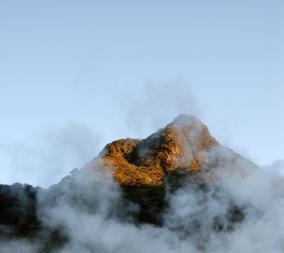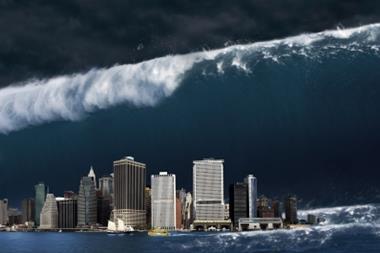Anne-Claire Serres is an agronomist specialised in hydrology, who heads the catastrophe quantification team at Paris Re. She talks to Catastrophe Risk Management about her work. By Lee Coppack
CAT RISK: What is your scientific background?
SERRES: I took my BSc in geology and mathematics at University of Lyon and then a further degree, equivalent to an MSc+, as an agronomist, specialised in hydrology and geographic information systems, at the Ecole Nationale Supérieure d’Agronomie de Rennes.
I started my professional experience in 1999 at the Insituto Nacional Del Agua y del Ambiente in Buenos Aires, working on the development of a deterministic-stochastic
rainfall runoff model for the Pilcomayo river basin to harmonise water management between Argentina, Bolivia and Paraguay. Then I worked for the consulting firm Caraïbes Environnement in Guadeloupe.
CAT RISK: What does your current work involve?
SERRES: I joined the insurance industry with Benfield in 2003 to develop flood models, but soon enlarged the scope to work on various other natural and technological catastrophes.
I started with Paris Re in 2007, and head the catastrophe quantification team. We have a central role within the underwriting division, for example providing support for treaty underwriting for all cat-exposed business worldwide and for all Paris Re entities, and quantifying and monitoring catastrophe
accumulations. We also do research and development work, such as portfolio optimisation, comparative reviews of cat models, and investigation of non–modelled perils.
CAT RISK: What do you think are the three most important hydrological issues for re/insurers in Europe today?
SERRES: In Europe, they are:
• River flood: flooding caused by intense and/or persistent rainfall over an extended period across large areas, or by springtime snowmelt. Examples of the former include the Elbe and Danube floods in 2002, which resulted in €3.5 billion insured losses, and of the latter, the spring 1995 floods in Norway which caused €160 million insured losses.
• Storm/sea surge or coastal flood: sea level rise generated by the force of the wind and atmospheric pressure differences at sea level, aggravated when combined with a high tide. A North Sea storm surge in February 1953 killed more than 2,000 people in the Netherlands and United Kingdom.
• Pluvial/flash flood: flooding of low lying areas, including from small tributaries, due to short duration, intensive rainfall from convective thunderstorms, eventually contributing to river flood. The UK floods in June 2007, which cost €2 billion in insured losses, are an example.
Related to these three primary items are so-called secondary floods, such as dam/dyke breaks (Romania - April 2006), groundwater rise (France - winter 2001), debris flow (Slovenia - August 2005), glacial lake outbursts or back water phenomenon.
CAT RISK: What research would you like to do if a good fairy waved a magic wand so you had all the money and facilities you needed?
SERRES: The first flood risk analyses were done at country level. Then the concept of catchment came into play, but on a country basis. Floods in Europe in the last 10 years have shown that large rainfall events can trigger floods in various catchments in neighbouring countries, so estimation of correlations between catchments becomes fundamental. Therefore, a challenging research project would be to create a pan-European flood risk model which integrates climate change and correlation between catchments.
CAT RISK: If you could wave the magic wand yourself, what actions would you take to reduce the risk of catastrophic flooding in Europe?
SERRES: Of course, the first action would be to stop exacerbating the risk, which means reversing climate change trends, but this is a long term effort. Actions with short term results would be:
• Restoring flood plains and wetlands to an active role in flood storage, which also recharges underground aquifers – also very useful in case of droughts – as well as relocating dykes and opening natural levees.
• Restoring vegetation and forests, especially in mountainous/hilly areas, grassing river banks and flood plain areas, converting arable land into pasture in case of erosion and developing dry dams.
• Limiting soil sealing, by using green roofs and permeable pavement in urban areas, instead of permanent surface covering of impermeable material.
• Acquiring threatened properties to give the river bed back to its river.
Postscript
Lee Coppack is editor of Catastrophe Risk Management. lee.coppack@cat-risk.com
www.cat-risk.com


















No comments yet